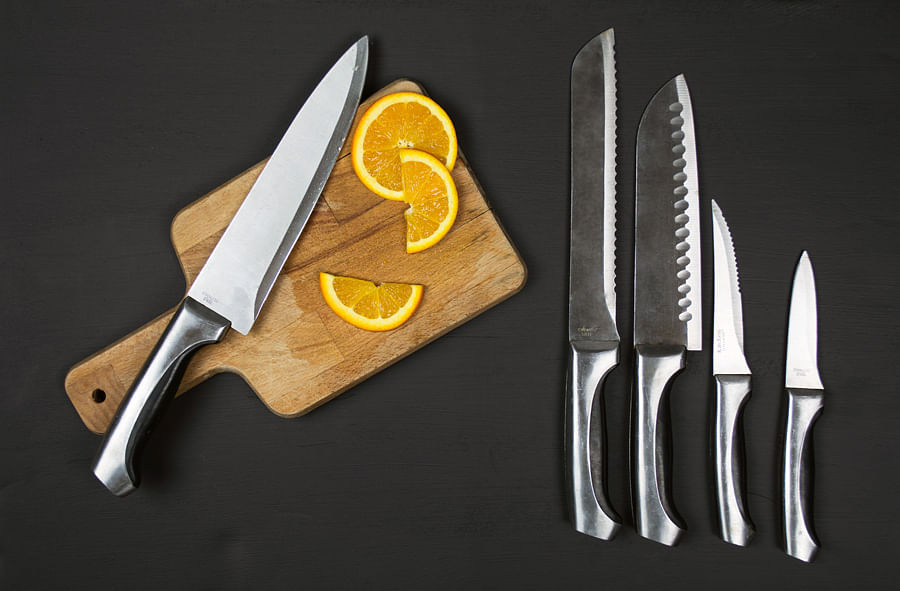
What would a kitchen be without knives? Nothing really.
A yummy meal is close to impossible without this very important kitchen tool. Yes, it’s not the knife that determines the taste of the food, but ask any person who is passionate about cooking and the answer will be that the knife plays a very important part in the whole cooking experience. Quite often, foodies who love to ‘cook up’ their own meals will own several knives and will take care of them like their own children. They will patiently, and carefully, wash, clean and dry knives before storing them away.
Why some people are so passionate about knives is the obvious question. Firstly, it is about the complete cooking experience, from cutting vegetables to garnishing the dish. Neatly cut vegetables or meat increases the visual appeal of the dish. Just imagine cutting ripe tomatoes with a blunt knife. It would be a total mess.
Sadly, the majority of people who cook do not pay much attention to owning a good knife, or even learn good cutting skills. Any ordinary knife, sharp or blunt, seems to do very well for most people. For starters, a sharp knife will obviously make the cutting job a lot easier. A good quality one remains sharp longer.
There are many kinds of knives that are designed to do a variety of tasks. Chef’s knife, bread knife, paring knife, boning knife, peeling knife, serrated knife and cleaver are some of the major types. A chef’s knife is generally longer than the other types and used by professionals. A paring knife is used for delicate cutting and has a thin and narrow blade. A serrated edge knife can be a general all-rounder, while a cleaver is a heavy knife with a rectangular blade. It is generally used for chopping meat, but can also be a used for cutting vegetables.
A chef's knife needs to be used in a rocking motion because of the curve of the blade, while a Santoku knife edge is not so curved and one needs to use a downward-forward motion for cutting.
Of course, there are the regional variations. A Santoku is a general purpose Japanese knife, while the cleaver has its own Chinese variations as far as the shape is concerned.
While buying a chef knife or cleaver, checking how well it is balanced is important. If the blade part is heavier, it will be rather tiring if there is a lot of cutting to be done.
A chef will recommend a high carbon steel knife because it retains the edge longer than a stainless steel knife. Carbon steel is harder than stainless steel but easier to sharpen. No one would like to keep sharpening knives on a frequent basis and that is a good enough reason to buy a carbon steel knife. The only problem with carbon steel is that it will rust very easily and has to be kept bone dry when not in use. This is the most common reason for people to buy stainless steel knives.
These knives can be sharpened with a simple silicon carbide block, but the angle at which the knife is held while sharpening is important. However, there are a lot of knife sharpeners available in the market if one is not up to the tedious task of using a block and maintaining the correct sharpening angle on both sides of the blade. Japanese whetstones are great for sharpening but it might be difficult to get hold of one in India.
The other important thing to note is that a wooden, or bamboo, cutting board is far gentler on the edge of the knife as compared to a plastic board.
The costlier knives will be better when it comes to the quality of steel or the balance. An inexpensive chef knife can be bought for about Rs 400 and good cleavers can cost about Rs 5000.
If you're seriously considering investing in quality knives, Victorinox, Winco, Wusthof and JA Henckels are among the best international brands.